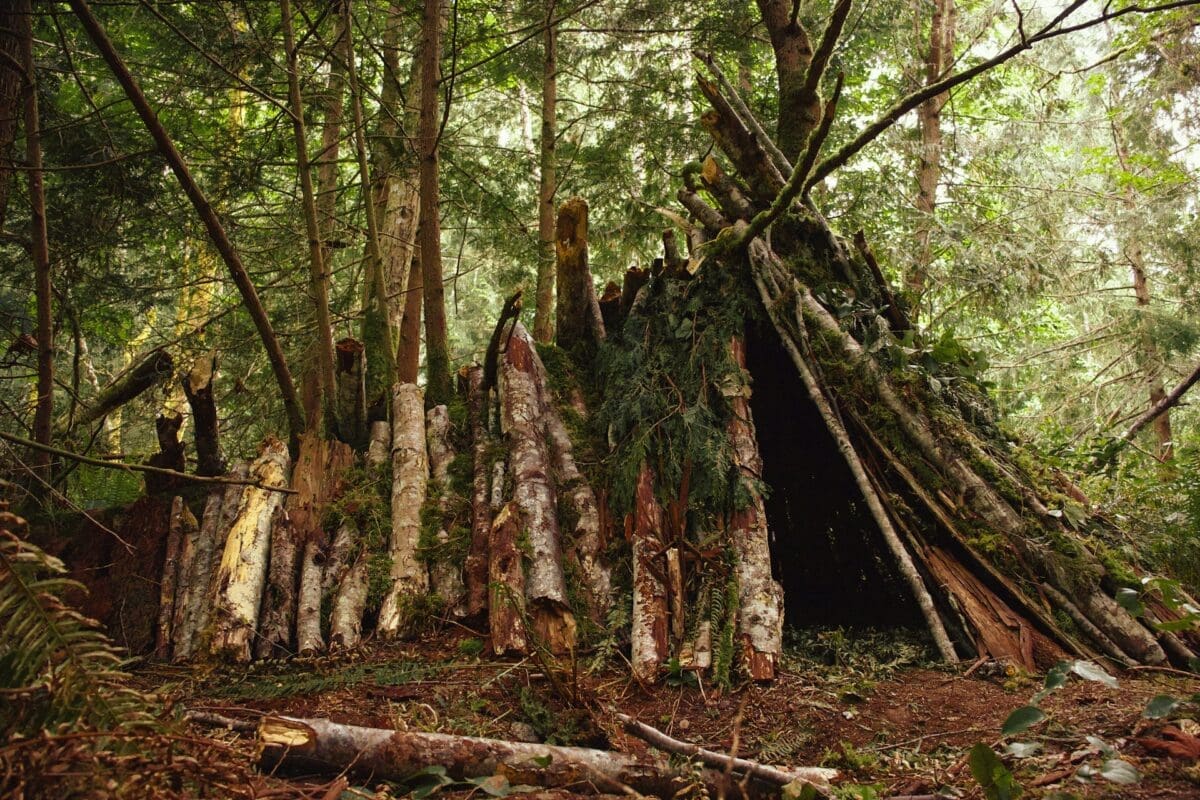When the weather turns brutal and the grid collapses, a roof over your head is the difference between surviving and becoming another statistic. Your first priority isn’t food or even fire—it’s shelter. Without it, you can freeze or overheat in hours.
This isn’t about a fancy log cabin or a Pinterest bushcraft hut. This is about building fast, strong, and simple shelters that will keep you alive when civilisation abandons you.
Why Shelter Comes Before Everything Else
Most people think they’ll last days without food or water. They won’t. Exposure kills faster than hunger.
- In freezing rain or wind, hypothermia can strike in under an hour.
- In desert heat, heatstroke can end you before the sun sets.
Your body can’t fight or flee when it’s burning energy to survive the elements. Shelter buys time.
Choosing the Right Shelter Location
Before building anything, location is survival. Look for:
- High Ground – Avoid valleys where cold air and floodwater collect.
- Natural Cover – Trees, rock overhangs, or dense foliage offer instant protection.
- Proximity to Resources – Near water, firewood, and materials, but away from predator paths.
- Wind Protection – Hills or boulders can shield you from exposure.
Avoid floodplains, avalanche-prone slopes, and insect swarms.
Types of Survival Shelters (You Can Build Anywhere)
1. Debris Hut (No Tools Needed)
- Lean a sturdy ridgepole against a fallen tree or rock.
- Cover it with sticks, then pile on knee-deep leaves, grass, or pine needles for insulation.
- Crawl inside—body heat will keep it warm even in near-freezing conditions.
- Survival Time: Up to 1–2 nights without fire.
2. Lean-To Shelter (Quick Wind Break)
- Drive two posts into the ground or prop against trees.
- Lean branches against the posts to form a wall angled toward the wind.
- Add a reflective fire wall opposite your shelter to bounce heat back.
3. Tarp or Poncho Shelter (Instant Roof)
- A tarp or even a survival blanket can become a lifesaving roof.
- Tie corners to trees or use stakes for a low, wind-resistant profile.
- Combine with ground insulation (leaves, branches) to avoid heat loss.
4. Snow Cave or Quinzee (Winter Survival)
- Pile snow into a mound, let it harden, then hollow it out for a windproof shelter.
- Block the entrance with a snow wall to trap heat.
- Beware: Ventilation holes are essential to avoid suffocation.
How to Make Your Shelter Warm and Safe
- Insulate the Ground – Use thick layers of leaves, pine boughs, or clothing to keep heat in.
- Windproof Your Walls – Overlap natural debris and add mud or clay to seal gaps.
- Build a Fire Safely – Place it outside with a reflector wall to project heat without choking you with smoke.
- Camouflage (If Needed) – In a hostile environment, cover your shelter with natural materials to stay hidden.
- Avoid Traps – Don’t build under dead trees or near unstable cliffs.
Essential Tools (Even Minimalists Should Carry)
- Tarp or Emergency Blanket – Ultralight, multipurpose shelter base.
- Fixed Blade Knife or Hatchet – For cutting branches and stakes.
- 550 Paracord – Strong, compact, and invaluable for shelter frames.
- Firestarter – Because cold hands make matches useless.
- Compact Shovel – Doubles for snow caves or digging drainage.
5-Minute Shelter Checklist (Always Keep Handy)
- Check the weather, wind, and hazards.
- Find high, dry ground with natural cover.
- Gather sticks, leaves, and insulating material.
- Build a wind-facing barrier or roof first, then insulate.
- Start a fire or secure a heat source before dark.
The Bottom Line
When things fall apart, your shelter isn’t just a roof—it’s the line between life and death. A good survivalist doesn’t wait for rescue; they build, adapt, and endure.
Learn these skills now, practise them before the storm hits, and you won’t just survive—you’ll outlast the panic.

